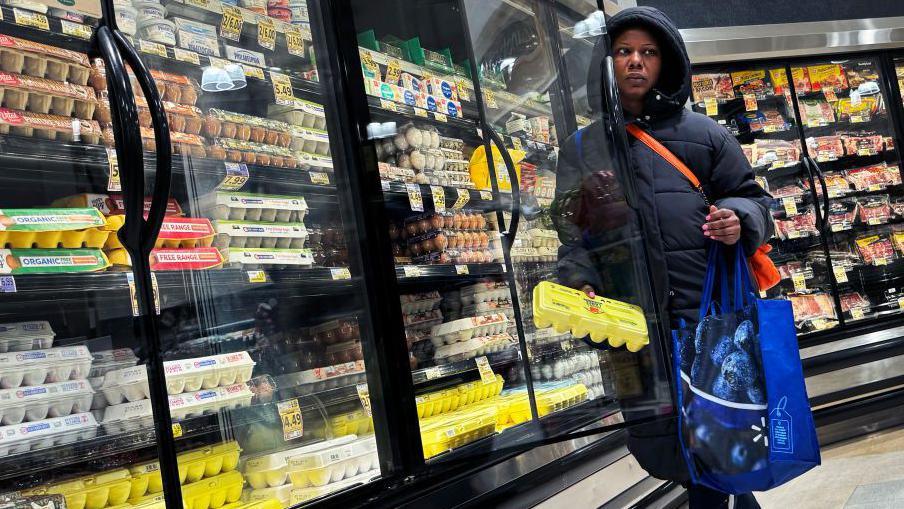Easing US inflation stokes interest rate cut debate

- Published
The pace of price increases in the US showed signs of slowing last month, after a streak of higher-than-expected inflation data had stoked concerns about the world's largest economy.
Consumer prices rose 3.4% in the 12 months to April, down from 3.5% for the month before, the Labor Department said.
Higher rents and petrol costs accounted for the majority of the increase in the cost of living.
But analysts said the fall in inflation was unlikely to resolve debates about how the US central bank should set interest rates.
The Federal Reserve has kept its key interest rate hovering around 5.3% since last July, hoping that the highest borrowing costs in two decades will help ease pressures pushing up prices.
Expectations of imminent rate cuts have been repeatedly pushed back since the start of the year, as economic growth holds up and prices continue to rise faster than the Fed's 2% annual target.
A separate report on retail sales on Wednesday showed spending was flat in April, compared with March, raising speculation that the economy might be starting to weaken.
It followed a string of updates from big retailers warning that shoppers, especially those with lower incomes, are cutting back.
Richard Flynn, managing director at investment firm Charles Schwab UK, said the latest inflation figures would offer reassurance but were "unlikely to prompt an imminent change in interest rates".
"Officials have been fairly consistent in stating that current interest rates are sufficiently restrictive to bring inflation under control and that the next move will be a cut. However, it is also clear that they are in no rush to make that move," he said.
"Whether we see rates reduced in July, September, or December will depend on how inflation changes in the coming months, how the economy performs, and whether any issues arise in the financial system or jobs market."
The Labor Department reported that prices for new and used cars, furniture, toys and airline fares were among those falling from last year.
Grocery prices were 1.1% higher than a year ago, as declines in egg, milk, cheese and other dairy products were offset by higher prices in other areas.
Housing costs, which are driven by rents, rose 5.5% over the year. Car insurance and medical costs also climbed.
Stripping out food and energy, which tend to swing month-to-month, prices rose 3.6% over the last 12 months, the slowest pace since 2021.
Seema Shah, chief global strategist at Principal Asset Management, said the figures would be "a relief to the niggling concerns that inflation was starting to trend upwards again".
But she warned: "The weaker than expected retail sales number needs to be watched - cooling consumer spending is good, but if that transitions into a deeper slowdown it could herald some economic problems that markets would not welcome."